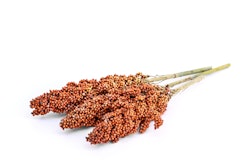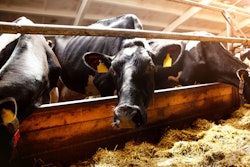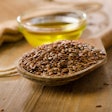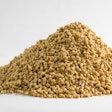
Barley is a winter crop and, in several parts of the world, it is already being harvested. The good news is that its price is relatively inexpensive, at least compared with overall cereal prices we experienced last year.
If this trend of reasonable prices continues with other cereals as the harvest season progresses is something that has piqued the interest of nutritionists and animal producers worldwide. For the moment, there is a great demand for information on feeding high-barley feeds – and one such species where this can be done is swine. Before we start formulating such diets, however, there are four major points of consideration, briefly mentioned here and even better discussed in depth with your own nutritionist.
1. Protein levels
Barley for animal feeds (not the beer industry) contains about 10% crude protein. However, this has a standard deviation of the mean around 1, meaning 95% of the samples will fall between 7% and 13%. Given our prior experiences with soft (feed quality) wheat with up to 18% crude protein, we must be sure what kind of barley we are harvesting. A simple lab analysis is inexpensive, and it helps nutritionists who must decide on upper limits. It must be pointed out that higher protein does not translate proportionately to higher amino acids. Some increase more or less and this can be estimated with some accuracy with “calibration curves” in near-infrared (NIR) measurements or by appropriate prediction equations.
2. Mycotoxins
Inexpensive barley can be utterly worthless if it is full of mycotoxins, especially non-polar ones that are many, difficult to neutralize, cause much damage to all ages and classes, and require expensive counter measures. The weather remains variable, as always, and that plays a huge role in mycotoxin development at the field and storage. Again, a mycotoxin analysis profile is offered by most anti-mycotoxin agent suppliers, often at little or no cost. Naturally, we would recommend buying only barley that is free of mycotoxins, or with levels below maximums as those established by national authorities.
3. Enzymes
There is widespread belief that once barley enters a formulation, we must always add an enzyme. It is true that, quite often, a certain family of enzymes can improve energy availability by about 50-plus kcal ME per kg grain, but this is highly variable. In general, there is a certain inclusion level after which adding an exogenous enzyme is a financially viable option, but this is best left in the hands of experienced nutritionists. Finally, not all enzymes are the same and, although we keep repeating xylanases are for wheat and beta-glucanases for barley, we must keep in mind that it is the concentration that differentiates these two cereals as both fiber families exist in their profiles. Thus, it may as well be worth adding both, but for that a fiber analysis would be most certainly needed.
4. High-fiber feeds
Barley has a crude fiber concentration between 4% and 5%. Thus, a diet rich in barley will have lower energy and lower specific density, making it bulkier. On the other hand, it is our commercial experience that in the past 20 years or so, modern genetics raised in modern facilities have reduced capacity to compensate for lower energy, and/or bulkier diets. This is especially true for the fast-growing genetics during the peak of their performance. Thus, we recommend feeding high-barley diets to developing gilts, gestating sows and heavy finishing pigs. All other ages and classes should be fed low to moderate levels, unless space and time are not an issue, in which case an extended growing period does not increase cost.

















